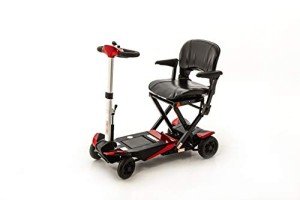Why Mobility Aids Is Harder Than You Think

Understanding Mobility Aids: Enhancing Independence and Quality of Life
As society continues to age and individuals increasingly look for ways to keep self-reliance, the need for mobility aids has never been more essential. Mobility aids, which include a series of devices designed to help individuals with walking or moving around, play a vital role in promoting mobility, improving safety, and enhancing general lifestyle. This blog site post will explore the different kinds of mobility aids, their advantages, considerations for choice, and address some regularly asked concerns.
Kinds Of Mobility Aids
Numerous mobility aids are readily available, each developed to resolve particular needs. The following table sums up a few of the most typical types of mobility aids and their functions.
| Type of Mobility Aid | Description | Best Suited For | Key Features |
|---|---|---|---|
| Walking sticks | A portable stick offering assistance and balance. | People who need very little help. | Light-weight, portable, adjustable height. |
| Walkers | Four-legged frames offering stability. | Those needing considerable support while strolling. | Foldable, some with wheels, added security functions. |
| Rollators | Wheeled walkers with a seat for resting. | Individuals needing mobility with the alternative to rest. | Brakes, baskets for personal products, adjustable height. |
| Wheelchairs | Chairs with wheels for individuals with limited mobility. | Those not able to stroll or requiring extensive assistance. | Manual or powered choices, personalized seating. |
| Scooters | Motorized devices for bigger distances. | Individuals with limited stamina however needing self-reliance. | Different sizes and styles, typically portable. |
| Crutches | Support devices positioned under the arms or lower arms. | People recovering from lower limb injuries. | Adjustable, lightweight, requires upper body strength. |
| Stairlifts | Mechanical devices for moving between floorings. | Users facing obstacles in multi-level homes. | Customizable for different staircases, automated. |
Advantages of Mobility Aids
Mobility aids provide an array of advantages that can significantly boost the lives of people facing mobility challenges. Some significant advantages consist of:
- Increased Independence: Mobility aids empower individuals to move easily without counting on others for help, therefore improving their confidence and self-esteem.
- Boosted Safety: Using mobility aids can decrease the threat of falls and injuries, particularly for older adults or those with balance concerns.
- Enhanced Quality of Life: By facilitating mobility, individuals can participate in social activities, participate in events, and delight in life more fully, contributing to much better emotional and mental health.
- Rehabilitation Support: After surgical treatment or injury, mobility aids offer necessary assistance and stability, helping in recovery and rehabilitation procedures.
- Accessibility: Many mobility aids are created to be used both inside your home and outdoors, guaranteeing that people can navigate various environments with ease.
Aspects to Consider When Choosing Mobility Aids
Selecting the proper mobility help needs mindful consideration of several aspects, including:
| Factor | Factors to consider |
|---|---|
| User's Needs | Evaluate the level of mobility needed; consider whether the user needs short-term or long-term help. |
| Physical Limitations | Examine the user's strength, balance, and coordination to identify the very best kind of aid. |
| Setting | Think about the primary environments where the aid will be utilized, such as home, outdoors, or specific surfaces. |
| Weight and Portability | Guarantee that the picked device is manageable relating to portability and storage, especially for outdoor use. |
| Budget plan | Mobility aids been available in a series of prices; think about insurance protection and readily available funding options. |
| Adjustability | Select aids that can be changed for height and comfort to accommodate development or changing needs. |
Often Asked Questions About Mobility Aids
1. How do I know if I need a mobility aid?
Many factors can signal the requirement for a mobility help, such as difficulty strolling or stabilizing, fatigue while standing, or a current surgical treatment affecting mobility. Consulting with folding travel scooters can supply assistance tailored to private needs.
2. What kinds of mobility aids are covered by insurance coverage?
Protection varies between insurance companies, but most supply choices for long lasting medical equipment, which generally includes wheelchairs, walkers, and some types of walking sticks. Consult your insurance company for specific coverage info.
3. Can mobility aids be utilized outdoors?
Yes, numerous contemporary mobility aids are designed for outside use. Rollators, scooters, and some walkers are equipped with features for stability and ease of usage on different terrain.
4. How do I maintain my mobility help?
Regular maintenance includes looking for any wear and tear, guaranteeing that parts such as wheels, brakes, and frames are operating properly, and cleaning the devices as required. Following the maker's guidelines is essential for safety.
5. Exists a threat of becoming based on mobility aids?
While some users might end up being reliant on mobility aids, they are created to promote independence and mobility. Slowly using a mobility help can boost self-confidence and assistance keep physical strength and coordination.
Mobility aids are indispensable tools that empower people to get rid of physical challenges, promoting self-reliance and enhancing quality of life. By understanding the different kinds of mobility aids available, their benefits, and crucial elements for factor to consider, households and caretakers can make educated choices that best satisfy the requirements of their loved ones. With the right assistance, those with mobility obstacles can lead satisfying and active lives, totally free to check out the world around them.

